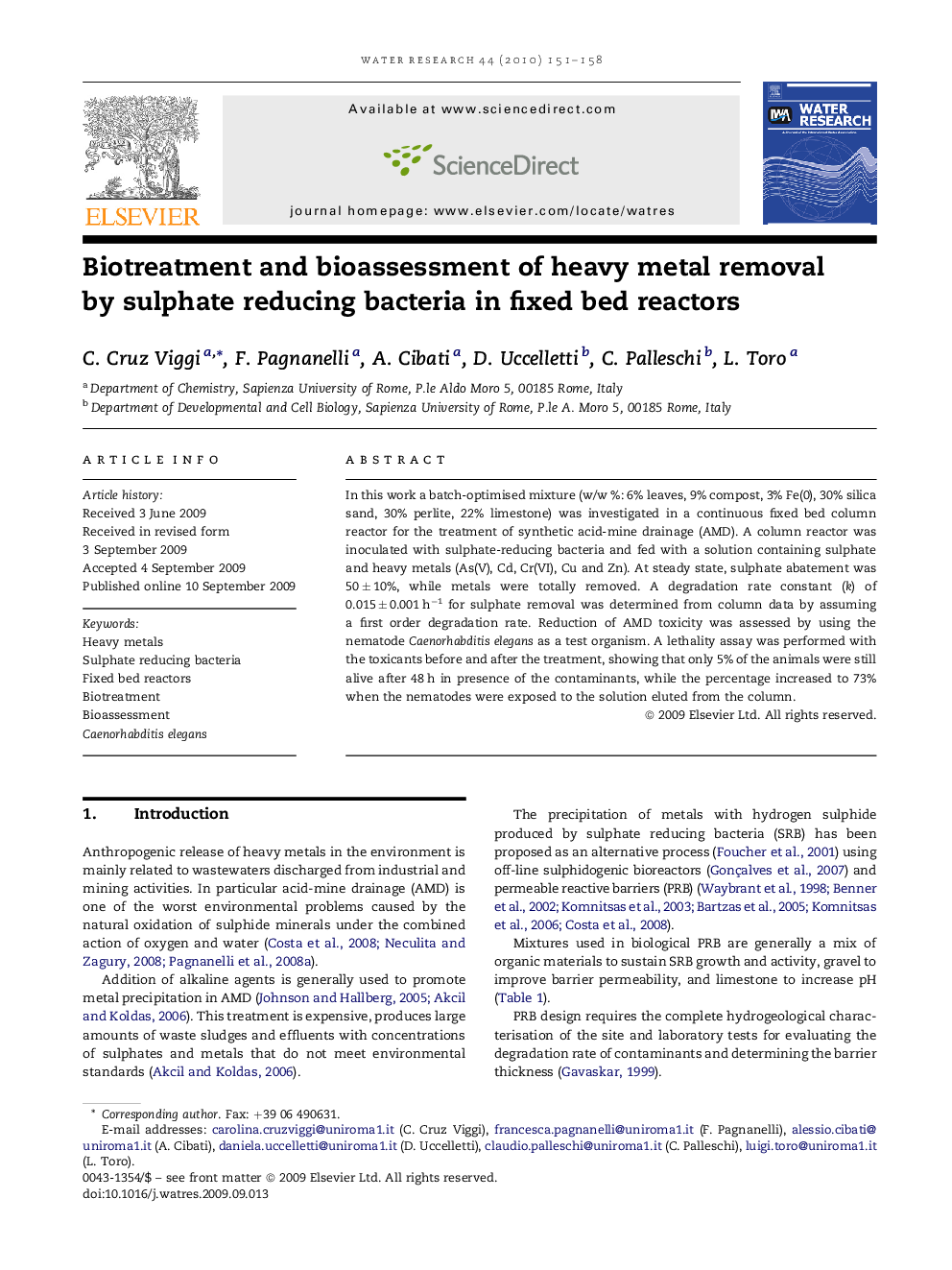| کد مقاله | کد نشریه | سال انتشار | مقاله انگلیسی | نسخه تمام متن |
|---|---|---|---|---|
| 6368193 | 1316945 | 2010 | 8 صفحه PDF | دانلود رایگان |

In this work a batch-optimised mixture (w/w %: 6% leaves, 9% compost, 3% Fe(0), 30% silica sand, 30% perlite, 22% limestone) was investigated in a continuous fixed bed column reactor for the treatment of synthetic acid-mine drainage (AMD). A column reactor was inoculated with sulphate-reducing bacteria and fed with a solution containing sulphate and heavy metals (As(V), Cd, Cr(VI), Cu and Zn). At steady state, sulphate abatement was 50 ± 10%, while metals were totally removed. A degradation rate constant (k) of 0.015 ± 0.001 hâ1 for sulphate removal was determined from column data by assuming a first order degradation rate. Reduction of AMD toxicity was assessed by using the nematode Caenorhabditis elegans as a test organism. A lethality assay was performed with the toxicants before and after the treatment, showing that only 5% of the animals were still alive after 48 h in presence of the contaminants, while the percentage increased to 73% when the nematodes were exposed to the solution eluted from the column.
Journal: Water Research - Volume 44, Issue 1, January 2010, Pages 151-158